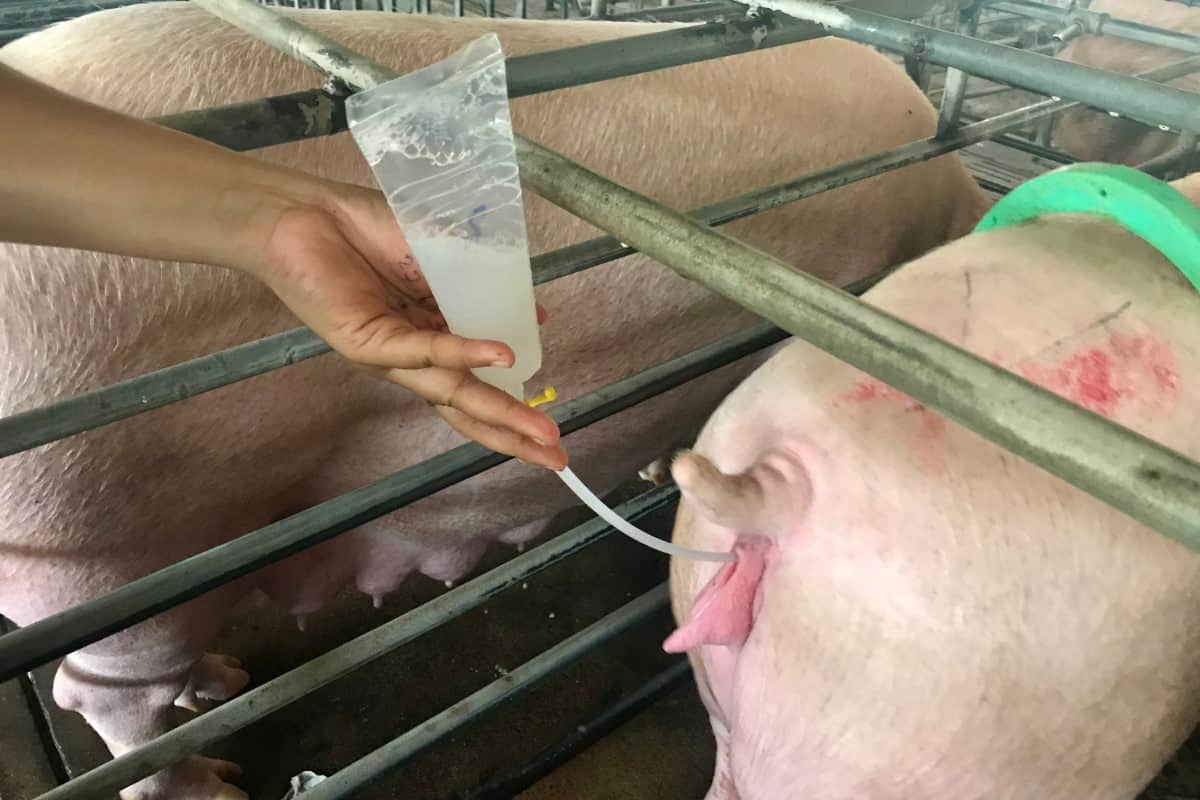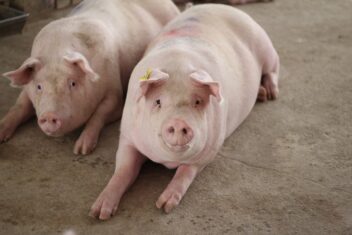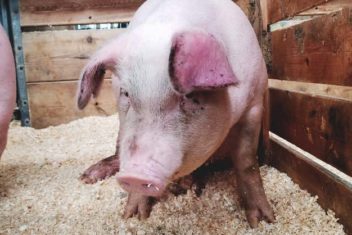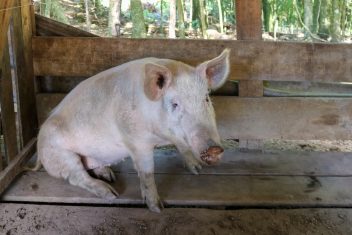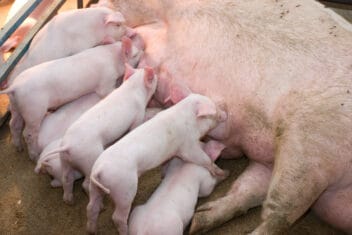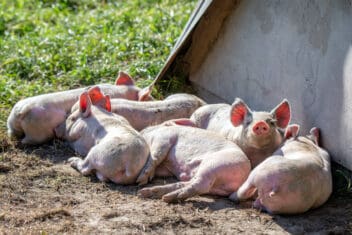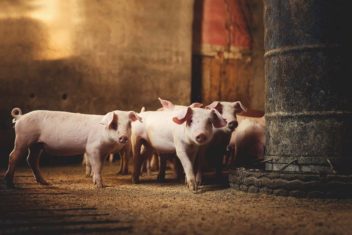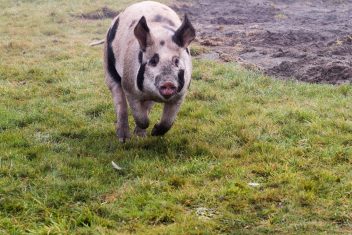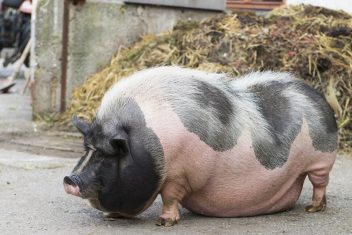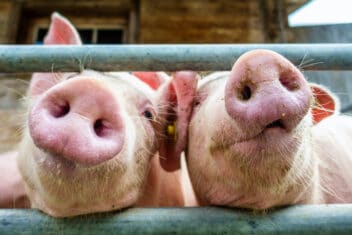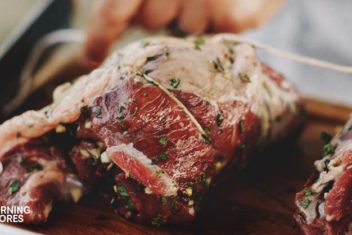For almost as long as my husband and I have raised pigs on our farm, we have relied on AI breeding (artificial insemination) to get the job done.
Although AI is the norm when it comes to breeding beef cattle and dairy cows, it is extremely rare for other livestock, even pigs.
Most people would prefer to keep a boar to breed their sow or sows, and while that works for lots of folks, it’s simply not the right option for us.
AI breeding is a convenient way to breed your animals, especially when it comes to pigs.
That said, it’s not an imperfect technique. There are some downfalls to consider before deciding whether it’s right for you.
Here’s what you should know.
What is AI Breeding?
A colloquial term for artificial insemination, AI technology involves collecting sperm from a male animal (in this case, a boar) and then depositing them into the reproductive tract of a female (in this case, a sow or gilt).
This technology is available for just about every domestic livestock species. However, it’s most commonly used in dairy cattle.
That’s because, for many species, it is simply not worth the time and hassle involved in learning how to properly service an animal. Many people make this complaint when it comes to AI breeding pigs – I, however, see several advantages.
Benefits of AI Breeding Pigs
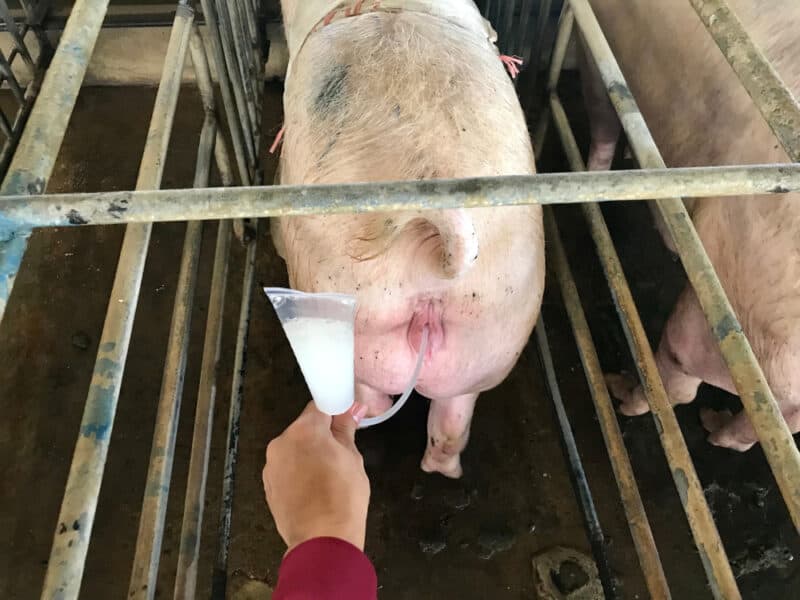
1. No Need to Keep a Boar
We had to buy a single piglet from another farmer a year or two ago (a restaurant customer decided he wanted one more hog for the summer).
We drove to the farm and were able to pick our piglet out of a litter that had just been weaned.
Next to the barn where the piglets were housed, there was a separate barn that housed the boar. This was one of my first experiences being that close to a boar. I’ll be honest, it was a little intimidating! I thought our breeding sow, Big Boo, was big – and at nearly 600 pounds, she was.
This boar, though, was another monstrosity altogether. He was absolutely massive.
While it’s not difficult to keep a boar – and managing a boar and his behaviors often comes down to selecting the right breed – it’s not something we have any interest in doing.
We have never been interested in raising a boar because it would require additional winter housing (which we don’t have) and additional feed expenses.
We’ve run the numbers, and for us, raising pigs during some of the coldest months of the year when natural foraging opportunities are limited, it is actually more expensive to keep a boar just to breed one sow than it is to buy semen and AI breed.
Of course, that factor is negated if you plan on breeding more than one sow. The expense will be spread out over many, many more piglets.
However, for many farmers who only breed one or two sows, it’s more economical to AI breed than to feed a boar during the entire year just for a few minutes of performance!
2. Genetic Improvement
Our favorite part of AI breeding pigs is our ability to pinpoint the exact genetics we want to be carried in our litter of piglets. We’ve raised several breeds, including Tamworths, Durocs, Berkshires, and Yorkshires.
When you AI breed pigs, you know exactly what the genetics of a boar are. That makes it easier when it comes to managing your litter.
3. Easier to Keep Records
As a corollary note to the last point, one other thing I enjoy about AI breeding is that it makes it much easier to keep records.
When you order semen from your supplier, you will be given a paper trail to follow. This will tell you what kind of semen was ordered, when it was shipped, and when you received it.
That way, you’ll know exactly what kind of genetics you have and what dates you breed your sow or gilt.
4. Can Be Less Expensive
Though this is not true for all farmers, AI breeding pigs for us is a much less expensive option than it would be to raise a boar.
We don’t have access to free or inexpensive feed (at least not in the winter, when foraging is not an option). Also, we have limited space in which to raise pigs (just a few acres). We don’t want to dedicate more of that space to a boar year-round.
Plus, boars are extremely large – and they can be destructive due to their sheer size alone. Yet another hassle we don’t want to deal with (and another expense, to boot).
5. Can Pinpoint Date of Farrowing Easier
This year, our sow was due to farrow sometime in late September or early October. That kind of imprecision normally wouldn’t be an issue. I work from home. That means I can help my husband when it comes to detecting early signs of farrowing, like secretions, swelling, and nesting behavior.
The problem with not knowing exactly when she was going to have our piglets this year was that I, too, was pregnant – and due at the end of September.
While most sows farrow just fine on their own, ours has had a bit of a complex medical history that makes it necessary for us to be there when she delivers.
Fortunately, pigs are known for being reliable when it comes to sticking to their “due dates”. All we had to do was take a look at the dates our sow was bred to get an idea.
We knew she would have her piglets at the end of the first week in October. While we weren’t sure whether that would be on a Thursday, Friday, or Saturday, it gave us enough confidence to not have to worry about still being at the hospital with our newest little “piglet” when she did decide to go into labor.
I’m sure there are some pig farmers out there who have the ability to put a boar in with a sow and then estimate the date of farrowing to a T.
However, the reality is that unless you have surveillance cameras set up in your barns, you probably aren’t going to be able to watch them 24/7 – and to know, as my husband likes to put it, “which tooth of the saw bit her.”
It can take a few go-arounds for a sow to get pregnant, and without knowing which day that was on, you can’t estimate the date of farrowing with any sort of reliability.
Challenges of AI Breeding Pigs
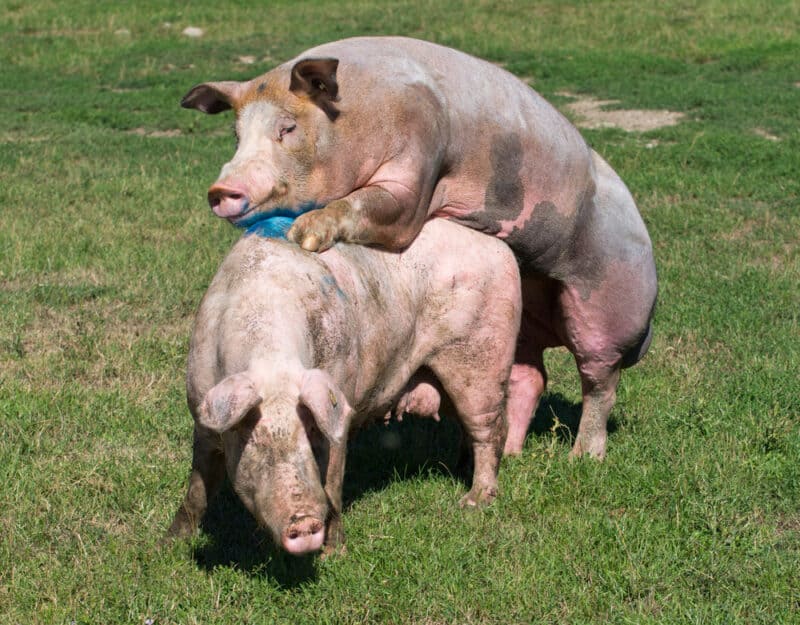
1. Expenses
A major benefit of AI breeding pigs is that you already know the quality of the semen you are going to be using.
If you rely on a boar that you have never used before, you have no way of knowing whether he will be able to breed the sow.
However, with natural service, it will be much easier for the mating process to occur. You won’t have to use “artificial” techniques to encourage the sow to stand. The boar will do all of that for you with his mere presence alone.
You can usually service a sow two or three times, meaning you’ll need to order two or three vials of semen.
This is not cheap. Even when you shop around for the most competitive prices, you can still expect to pay around $25 per dose.
That’s not counting other materials you will need for the AI process, like sow rods, gilt rods, boar spray, and more.
Of course, you’re also going to pay for a cooler, gel packs, and the courier delivery charges for those items to get to you, too.
We recently shopped a “holiday sale” when we ordered semen to breed our two pigs. We paid nearly $200 with everything in total.
Don’t forget that you’re paying to feed and house a sow throughout the entire year, too. Those expenses can add up.
We have crunched the numbers. Based on what we charge for meat and weaner pigs, AI breeding is the most affordable avenue for us. It might not be for you. Make sure you do some research to check if the expenses are worth it in your scenario.
2. Logistical Issues
One of the biggest concerns with AI breeding is that, of course, it is not a natural process. Therefore, human error can come into play.
When a boar mates with a sow, the semen is in and out. It’s not subjected to the changes in the environment that semen for AI breeding is. Also, each female gets “serviced” more than once (and with multiple “doses”) each time she goes into heat.
To correctly AI breed a sow, you need to do so correctly and at the optimal time. You need to heat check carefully and at regular intervals. A pig’s estrous cycle averages 21 days.
However, it can range from 17-25 days. It’s not always consistent, even with the same sow.
Plus, for a sow to “stand,” a behavior that is necessary for breeding, this reflex must be stimulated by coming into contact with a mature boar.
When you AI breed, you get around this by spraying her with a shot of boar spray pheromones. Again, it’s just one more moving part you need to keep track of.
3. Need for Precision – and Practice!
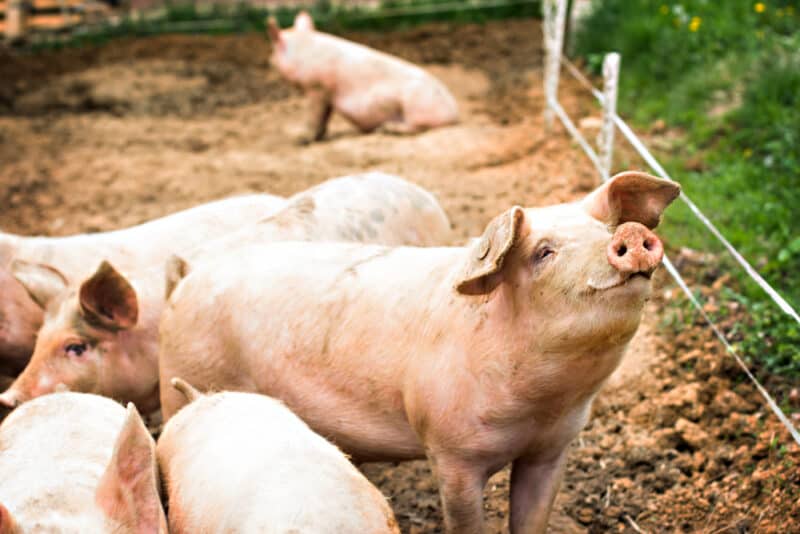
If you ever want to see a comical sight, come over to our farm on breeding day. At least, the breeding days of the past, that is, before we became more skilled at AI breeding.
When you are AI breeding a sow, you need to apply some pressure to her torso. This simulates the weight of a boar and encourages her to stand (similar to how the pheromones are used).
The first few times we bred Boo, I simply leaned on her while my husband bred her with the shipped semen. However, as a several 100-pound animal, she is quite tall (and I am quite short).
When it came time to breed her the most recent time, I was heavily pregnant. I was not capable of helping him apply pressure.
For a while, he experimented with a technique that had him sitting on her back to apply the pressure. This worked in theory.
The problem? His feet did not touch the ground.
When she decided she had had enough of this business, he ended up riding her around the pen for a while like a rodeo clown.
I laughed and laughed – but he did not find it so funny!
Later, he found that using a grain bag filled with sand was a good way to accomplish this task without my help.
You need to be incredibly precise and willing to fail a few times before you get things right. Practice makes perfect, as they say! If you have access to someone who might be able to show you the ropes when you’re first learning this technique, I can’t recommend that enough.
4. Ordering Process
I’ll never forget the day we got our first semen catalog in the mail. I think the mailman was less than impressed!
Now, it’s a day we look forward to. We get to pick out the boar that will provide half of the genetics for our next litter of piglets.
The ordering process for AI breeding is not always easy, though. This is another reason why many farmers steer clear of this method.
The window in which you can breed a sow is short – usually, 3 days, start to finish. You have to watch carefully for signs of heat and call in an order of semen to be shipped overnight.
The semen has to be handled carefully, too, to ensure its viability. It needs to be fully cooled before packaging and be temperature controlled during transport – not too hot and not too cold.
We have to watch tracking information carefully to find out when it has arrived at the main handling facility for UPS in our area.
That’s because we have to pick it up directly from the warehouse rather than allowing it to be delivered to the farm. After all, it can’t be riding around in the back of a (non-temperature controlled) van all day.
This ordering process is complicated and time-intensive. This is another reason why many people choose not to rely on AI breeding pigs on their farms.
5. Need to Understand Sow Reproductive System
As you might have inferred from reading the above suggestions, successfully AI breeding a sow relies on an intricate knowledge of the sow reproductive system and techniques for AI breeding that many people just don’t have.
It takes a lot of time and practice to get good at AI breeding. This, unfortunately, can cost you a lot of time and money in the process.
One year, we bred our sow three times before she finally took. That’s a lot of money. Now, we very rarely make mistakes, but for a while, we wondered whether it was truly worth it.
If you’re thinking about AI breeding a sow, do as much research as you can.
That’s doubly true if you plan on breeding a gilt. It can be even more difficult for the process to take.
The good news about pigs is that they have a reproductive system that makes AI a bit less time-consuming. It is also somewhat easier to accomplish than it is in cattle or sheep, in my opinion.
However, you still need to know the proper technique. You need to be able to time uterine contractions to get the sperm into the uterus and the oviduct.
Should I AI Breed My Pigs?
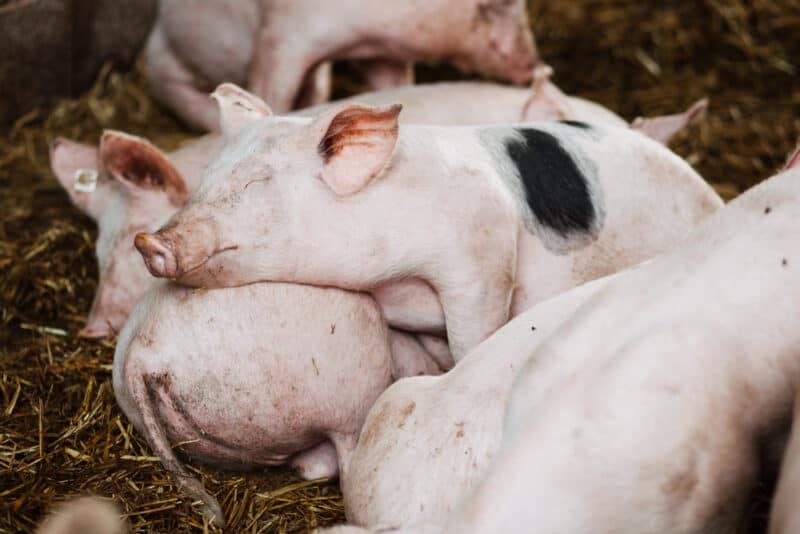
Ultimately, the decision of whether you should AI breed your pigs (or other livestock) is up to you. Although it is by no means a fun and enhancing process, it can make your on-farm management a bit easier.
Oh – and no big, smelly boar to care for, either!
